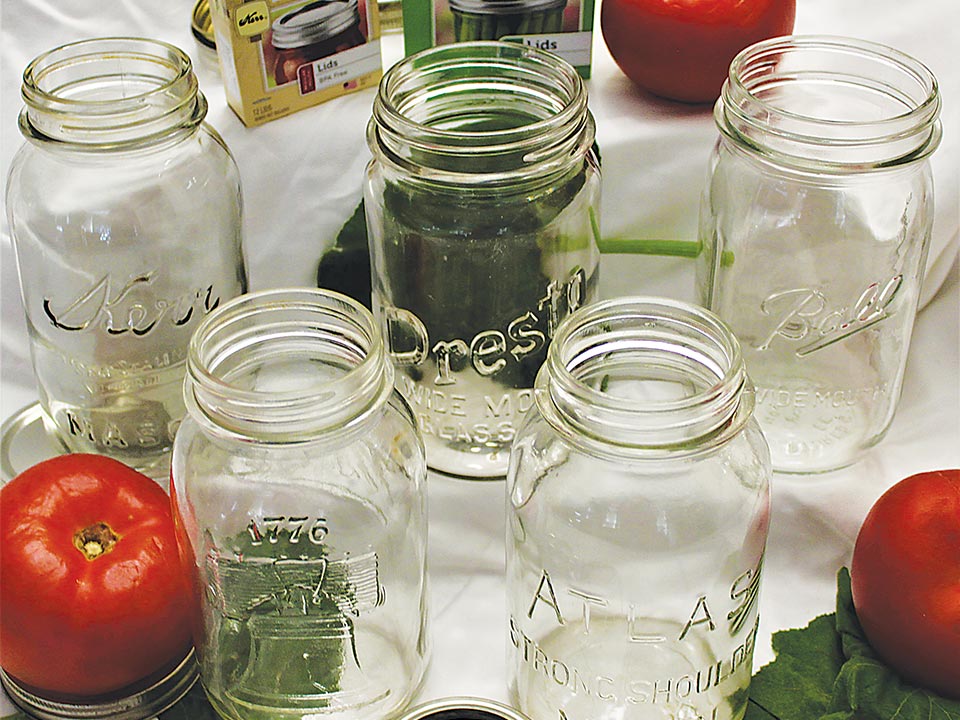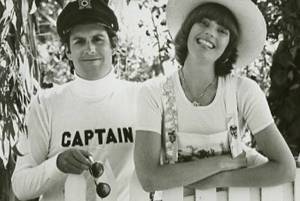By SUZANNE WARING
Do you remember the shelves of canning jars at your grandparents’ house? Or maybe you also keep canning jars to process and preserve food.
Most jars have had “Mason” inscribed in the glass, and likely they also have been inscribed with “Ball” or “Kerr.”
So what’s this about Jarden?
Preservation is essential for feeding a population, especially in areas with seasons when food is not harvested. Napoleon is often credited with promoting the need for preserved food for his soldiers.
The French government in 1795 offered a reward to anyone who invented an effective method for preserving large amounts of food. In 1809 Nicholas Appert determined that food cooked inside a jar did not spoil unless the seal leaked. This is the basis for home canning today, but the jars and seals have improved over the years.
In 1858 a New Yorker by the name of John Mason built a machine that could cut threads onto zinc lids. The threaded lid with rubber ring and a glass jar with molded threads on its neck provided for a sealing mechanism.
This meant that the jar could be used repeatedly with a screw-on lid. Because of technicalities in patenting, Mason failed to profit from his invention.
As a result, other companies made jars with threads in the glass. (Today the Mason name identifies a jar that has a wide sealing surface on the lip of the jar and is tempered, so it can withstand high heat.)
About this time, glass jars with glass lids held down by a wire mechanism were the norm. A rubber ring placed between the lip of the jar and the glass lid created a seal. The process called for tightening the lid to the jar after it had been processed. The rubber ring made it easier to seal the jar, so these jars were called “Lightning” jars.
The Hazel-Atlas Company produced glass jars for home canning from the late 1800’s until 1964 and usually had the name Atlas inscribed on the jar. They had a raised lip, to help prevent cracking.
The Ball brothers, who had been making wood-jacketed tin cans for storage of oil, lard, and paint, soon took over the home canning industry. In 1883 they moved from Buffalo, N.Y., to Muncie, Ind., and switched to glass products. Muncie gave away free natural gas to companies that would build there, and the Ball brothers took advantage of this offer, because they needed a lot of natural gas to fire the furnaces to make the glass. For years they made and sold jars and canning supplies, including the Ball Blue Book.
The Ball Blue Book, with home canning instructions and recipes, is still published today.
The other leading maker of canning supplies, Alexander H. Kerr, created the Hermetic Fruit Jar Company in 1903, to make Economy and Self-Sealing glass jars. They were first made in Altoona, Kan., and Sand Springs, Okla., where natural gas was plentiful.
Kerr jars first had a metal lid with a permanently attached gasket. In 1915 Mr. Kerr invented a smaller, flat metal disk with an attached gasket that became the lid. A threaded metal ring held the lid down. With this type of lid, the jars could be reused, and the inexpensive lids were disposable. This is the type of lid most commonly used today.
Ball saw the advantages and began duplicating it. Kerr made the first wide-mouth jars, which Ball also soon copied. Kerr made jars until 1957 and made replacement lids until 1961.
In 1992 Kerr sold its commercial glass container manufacturing business to Ball Corporation.
In 1993 Ball spun off its home-canning business to Alltrista Corporation, which is now Jarden Corporation, and then Newell bought out Jarden but kept the name—check out the name on your box of lids.
Newell makes canning products under the names of Ball, Kerr, Golden, and Bernardin, which is the Canadian canning jar company. Products with the Ball name are sold mostly in the eastern part of the United States, while Kerr is found in the West.
No longer can we say that we have a preference to either Ball or Kerr, because they are now made by the same company.
Today, the name on the jar may be Ball or Kerr. The name in small print will be Jarden, but behind the names, it’s the Newell Corporation. ISI









